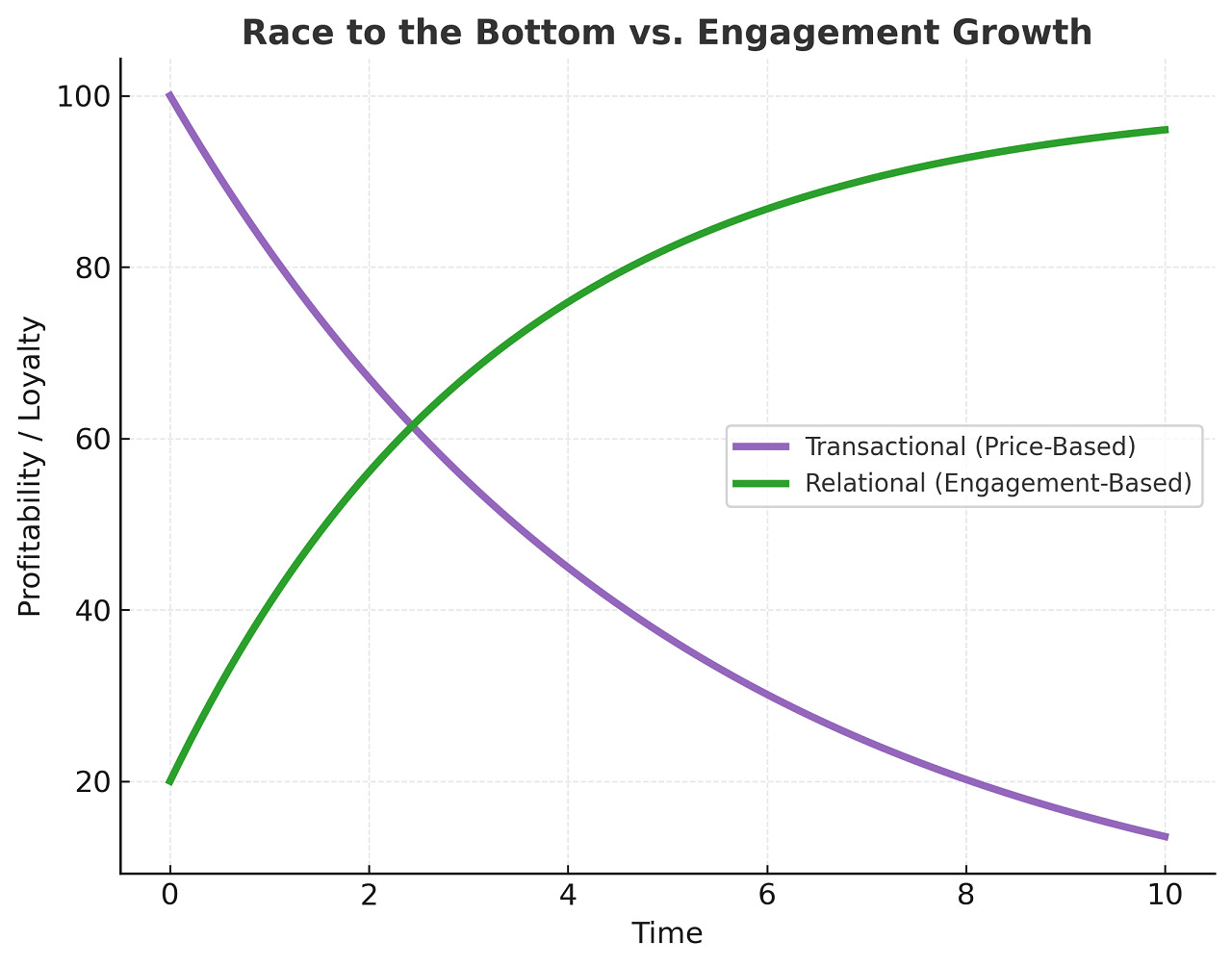More Than Discounts: Why True Partner Loyalty Can’t Be Bought
- Introduction: The Race to the Bottom
- Diagnosis: The Transactional Trap
- The Solution: Building an Engagement Engine
- Business Outcome: Growth Without Price Wars
- Conclusion
1. Introduction: The Race to the Bottom
In today’s competitive B2B market, the easiest way to motivate a partner seems to be offering a higher margin or an extra discount. While this tactic is simple, it leads straight into a dead end. It creates a “race to the bottom,” where vendors endlessly cut profitability in exchange for loyalty that lasts only until the next, slightly better offer.

Real competitive advantage lies elsewhere. It is built not on transactions but on relationships and engagement. This article demonstrates how systematic investment in a partner ecosystem can drive sales growth of up to +15% — without sacrificing margins.
2. Diagnosis: The Transactional Trap
The core problem with financial incentives is that they generate transactional loyalty, not long-term partnership. A partner stays with you as long as it’s profitable in the short term — but never develops a deeper bond with your brand or solution.
Table 1: Loyalty Models Compared
| Parameter | Transactional Approach (Discount-Driven) | Relational Approach (Engagement-Driven) |
|---|---|---|
| Loyalty Basis | Margins, rebates, bonuses | Ease of doing business, support, joint growth |
| Sustainability | Low (partner leaves for better price) | High (partner invests time & effort into relationship) |
| Partner Focus | “What’s in it for this one deal?” | “How do we win together long-term?” |
| Outcome | Unpredictable sales, price wars | Stable growth, greater share of wallet |
3. The Solution: Building an Engagement Engine
To escape the transactional trap, you need to create a partner ecosystem that makes working with you easy, rewarding, and engaging on a daily basis. This is exactly the role of a modern Partner Engagement Portal. It shifts the focus away from price toward three pillars:
- Ease of Doing Business
A single hub for training, marketing assets, and deal registration. Reduces friction and makes you the easiest vendor to work with. - Support
“Big Deal Support” programs show partners that you are invested in their wins. This positions you as an ally, not just a supplier. - Engagement
Gamified contests and reward-based learning generate daily motivation and excitement that quarterly rebates can’t match.
4. Business Outcome: Growth Without Price Wars
When you invest in partner experience and engagement rather than only margins, you unlock predictable and sustainable business results.
Table 2: ROI from the Engagement Engine
| Metric | Target Growth | How It’s Achieved |
|---|---|---|
| Partner Sales Growth | +15% | Partners sell more actively when working with a vendor that is easy and engaging. |
| Marketing Participation | +25% | Partners join campaigns more readily when tools are simple and integrated into daily workflows. |
| Product Knowledge | +30% | Reward-based training motivates partners to learn and promote your solutions more effectively. |
Conclusion
Stop investing in destructive price wars that erode profitability. Instead, channel resources into building the best partner experience in your market. By creating an ecosystem that values and supports your partners, you establish loyalty that no competitor can buy with another round of discounts.
References:
- Friend, Mark. _“Loyalty Rebates and Abuse of Dominance.” Cambridge Law Journal, Vol. 77, Issue 1 (2018): 25-28.
- “Business Marketing — A Nordic School Perspective.” Kowalkowski, Christian et al. (eds). Hanken School of Economics, CERS, Helsinki, Finland, 2015.
- Grönroos, Christian. “The value creation, interaction and marketing interface.” Journal of Business Research, 2011.
- Developing relationship marketing with customers: A relationship marketing approach, initially evolved in Scandinavia. Grönroos, C., Ed. Emerald / Nordic School. 2003.
- “Loyalty Rebates under EU Competition and US Antitrust Law.” Viktoria H. S. E. Robertson. In: Research Handbook on Abuse of Dominance and Monopolization (eds. Pınar Akman, Or Brook, Konstantinos Stylianou), 2023, pp. 200-221.


